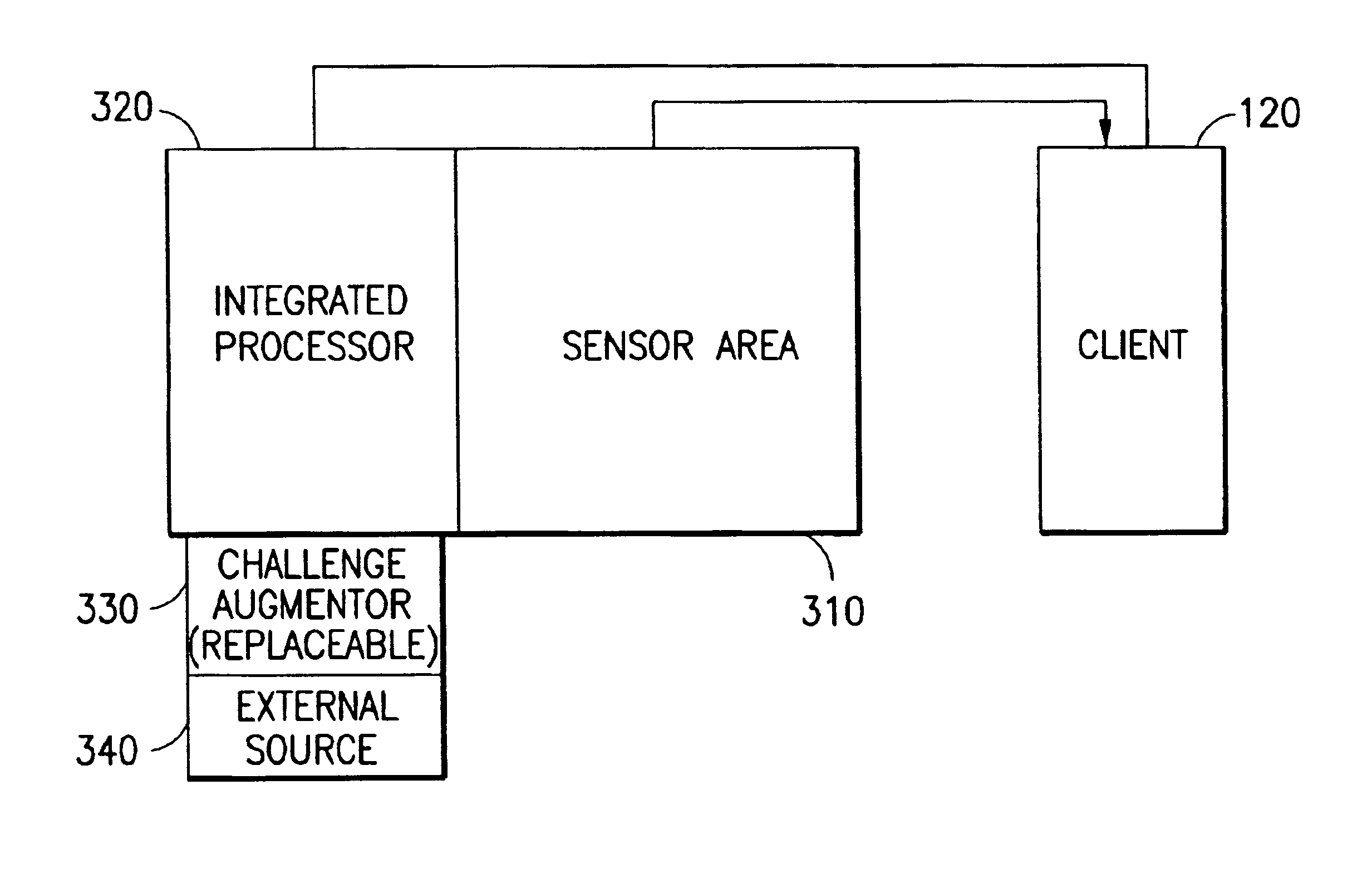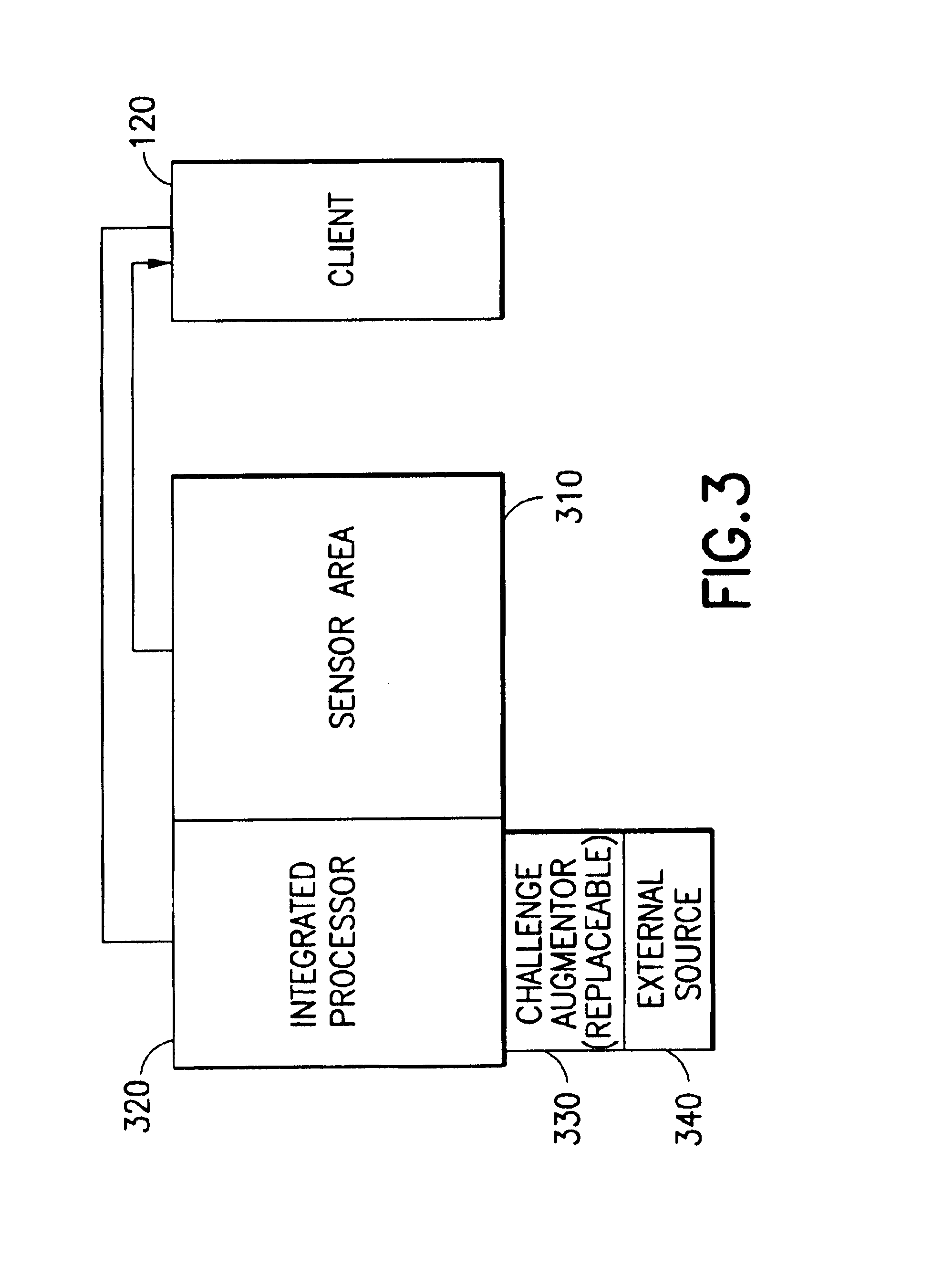System and method for liveness authentication using an augmented challenge/response scheme
a liveness authentication and challenge technology, applied in the field of image processing, can solve the problems of inability to decrypt intercepted transmissions, inability to use techniques, and inability to respond to liveness authentication, so as to reduce the chance of tampering
- Summary
- Abstract
- Description
- Claims
- Application Information
AI Technical Summary
Benefits of technology
Problems solved by technology
Method used
Image
Examples
Embodiment Construction
This invention relates to authenticating acquired images using a sensor. More specifically, it deals with authenticating the originality of biometrics data like fingerprint images. By adding a signature specifically computed from the acquired image in the sensor, authenticity of the image is ascertained. The integrated sensor has the power to augment an external challenge using the image and compute the response to the augmented challenge. Previously acquired or otherwise constructed or obtained digital images being fraudulently resubmitted to a server can be rejected using this technique.
The invention has components on the sensor and other components on the server. The components on the sensor are: (i) a challenge augmentor; and (ii) a response generator. On the server, the components are: (i) a challenge generator, (ii) a response verifier, and (iii) a list of which response algorithm is being used by each client.
In a preferred embodiment, a challenge is an arbitrary string of bit...
PUM
 Login to View More
Login to View More Abstract
Description
Claims
Application Information
 Login to View More
Login to View More - R&D
- Intellectual Property
- Life Sciences
- Materials
- Tech Scout
- Unparalleled Data Quality
- Higher Quality Content
- 60% Fewer Hallucinations
Browse by: Latest US Patents, China's latest patents, Technical Efficacy Thesaurus, Application Domain, Technology Topic, Popular Technical Reports.
© 2025 PatSnap. All rights reserved.Legal|Privacy policy|Modern Slavery Act Transparency Statement|Sitemap|About US| Contact US: help@patsnap.com



